
Martin Luther King Jr. was an American Baptist minister, activist, and political philosopher who was one of the most prominent leaders in the civil rights movement from 1955 until his assassination in 1968. A Black church leader and a son of early civil rights activist and minister Martin Luther King Sr., King advanced civil rights for people of color in the United States through nonviolence and civil disobedience. Inspired by his Christian beliefs and the nonviolent activism of Mahatma Gandhi, he led targeted, nonviolent resistance against Jim Crow laws and other forms of discrimination in the United States.

Coretta Scott King was an American author, activist, and civil rights leader and the wife of Martin Luther King Jr. from 1953 until his death. As an advocate for African-American equality, she was a leader for the civil rights movement in the 1960s. King was also a singer who often incorporated music into her civil rights work. King met her husband while attending graduate school in Boston. They both became increasingly active in the American civil rights movement.

Alberta Christine Williams King was an American civil rights organizer best known as the mother of Martin Luther King Jr., and as the wife of Martin Luther King Sr. She was the choir director of the Ebenezer Baptist Church. She was shot and killed in the church by 23-year-old Marcus Wayne Chenault six years after the assassination of her eldest son Martin Luther King Jr.

The Martin Luther King Jr. National Historical Park covers about 35 acres (0.14 km2) and includes several sites in Atlanta, Georgia related to the life and work of civil rights leader Martin Luther King Jr. Within the park is his boyhood home, and Ebenezer Baptist Church — the church where King was baptized and both he and his father, Martin Luther King Sr., were pastors — as well as, the grave site of King, Jr., and his wife, civil rights activist Coretta Scott King.

Martin Luther King III is an American human rights activist, philanthropist and advocate. The oldest son of civil rights leaders Martin Luther King Jr. and Coretta Scott King, King served as the 4th President of the Southern Christian Leadership Conference from 1997 to 2004.
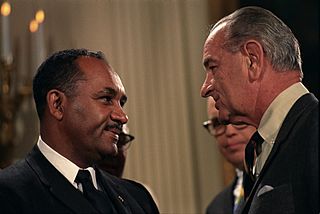
Clarence Maurice Mitchell Jr. was an American civil rights activist and was the chief lobbyist for the NAACP for nearly 30 years. He also served as a regional director for the organization.

The Memphis sanitation strike began on February 12, 1968, in response to the deaths of sanitation workers Echol Cole and Robert Walker. The deaths served as a breaking point for more than 1,300 African American men from the Memphis Department of Public Works as they demanded higher wages, time and a half overtime, dues check-off, safety measures, and pay for the rainy days when they were told to go home.
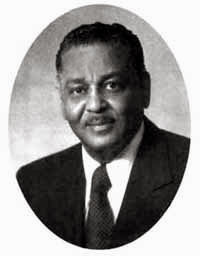
Clarence Everett Lightner was an American politician and mortician. A member of the Democratic Party, he served as Mayor of Raleigh, North Carolina from 1973 to 1975. He was the first popularly elected Mayor of Raleigh since 1947, and the first African American elected mayor of a mostly-white, major Southern city in the United States.
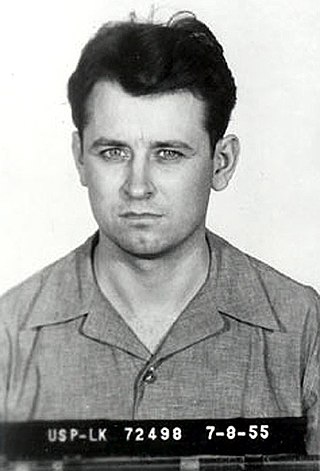
James Earl Ray was an American fugitive who was convicted for the assassination of Martin Luther King Jr. at the Lorraine Motel in Memphis, Tennessee, on April 4, 1968. After the assassination, Ray fled the United States and was captured in the United Kingdom. Ray was convicted in 1969 after entering a guilty plea—thus forgoing a jury trial and the possibility of a death sentence—and was sentenced to 99 years of imprisonment.
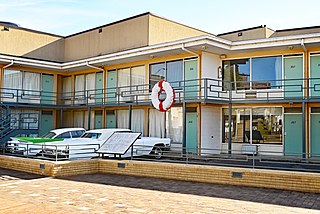
Martin Luther King Jr., an African-American clergyman and civil rights leader, was fatally shot at the Lorraine Motel in Memphis, Tennessee, on April 4, 1968, at 6:01 p.m. CST. He was rushed to St. Joseph's Hospital, where he died at 7:05 p.m. He was a prominent leader of the civil rights movement and a Nobel Peace Prize laureate who was known for his use of nonviolence and civil disobedience.
Echol Cole and Robert Walker were sanitation workers who died accidentally in Memphis, Tennessee at the corner of Colonial Rd. and Verne Rd. on February 1, 1968. While working that day, the pair sought refuge from a rainstorm in the compactor area of their garbage truck. The two African American men were prevented from seeking shelter from the rain inside a building due to segregation laws. They were killed when the compactor accidentally activated. Their deaths were a precursor to the Memphis sanitation strike, during which the prominent civil rights leader Martin Luther King Jr. was assassinated.
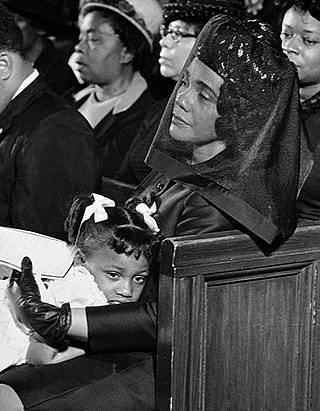
The first memorial service following the assassination of Martin Luther King Jr. on April 4, 1968, took place the following day at the R.S. Lewis Funeral Home in Memphis, Tennessee. This was followed by two funeral services on April 9, 1968, in Atlanta, Georgia, the first held for family and close friends at Ebenezer Baptist Church, where King and his father had both served as senior pastors, followed by a three-mile procession to Morehouse College, King's alma mater, for a public service.

The King assassination riots, also known as the Holy Week Uprising, were a wave of civil disturbance which swept across the United States following the assassination of Martin Luther King Jr. on April 4, 1968. Some of the biggest riots took place in Washington, D.C., Baltimore, Chicago, and Kansas City.
Lewis Ossie Swingler was a pioneering African-American journalist, editor, and newspaper publisher from Crittenden County, Arkansas. He was editor of the Memphis World and editor in chief and copublisher of the Tri-State Defender.

Ebenezer Baptist Church is a Baptist megachurch located in Atlanta, Georgia, United States, affiliated with the Progressive National Baptist Convention and American Baptist Churches USA. It was the church where Dr. Martin Luther King Jr. was co-pastor from 1960 until his assassination in 1968, the location of the funerals of both Dr. King and, in it's later expanded sanctuary, congressman John Lewis, and the church for which United States Senator Raphael Warnock has been pastor since 2005. Its historic church building and expanded sanctuary building are located in the historic area now designated as the Martin Luther King Jr. National Historical Park.
The history of the 1954 to 1968 American civil rights movement has been depicted and documented in film, song, theater, television, and the visual arts. These presentations add to and maintain cultural awareness and understanding of the goals, tactics, and accomplishments of the people who organized and participated in this nonviolent movement.
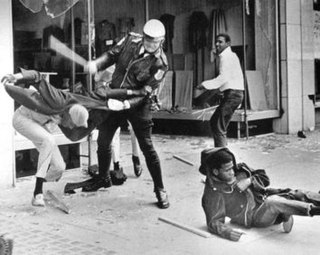
Larry Payne was a sixteen-year old African American teenager who was killed following a march in support of the Memphis sanitation strike on Thursday, March 28, 1968, in Memphis, Tennessee. He was the only fatality on that day although the New Pittsburgh Courier reported 60 injured and 276 arrested.

Robert Abbott Sengstacke, also known as Bobby Sengstacke, was an African-American photojournalist during the Civil Rights Movement for the Chicago Defender in Chicago, Illinois. Sengstacke was well known for his famous portraits of Martin Luther King Jr. and other prominent civil rights leaders. Sengstacke inherited the family–owned Sengstacke Newspaper Company. After retiring from journalism in 2015, Sengstacke moved to Hammond, Indiana where he lived until his death due to a respiratory illness in 2017 at age 73.

Conspiracy theories about the assassination of Martin Luther King Jr., a prominent leader of the civil rights movement, relate to different accounts of the incident that took place on April 4, 1968, in Memphis, Tennessee. King was assassinated on the balcony of the Lorraine Motel, the day after giving his final speech "I've Been to the Mountaintop". Claims soon arose over suspect aspects of King's assassination and the controversial role of the alleged assassin, James Earl Ray. Although his guilty plea eliminated the possibility of a trial before a jury, within days, Ray had recanted and claimed his confession was forced. Suspicions were further raised by the confirmation of illegal surveillance of King by the FBI and the CIA, and the FBI's attempt to prompt King to commit suicide.
















